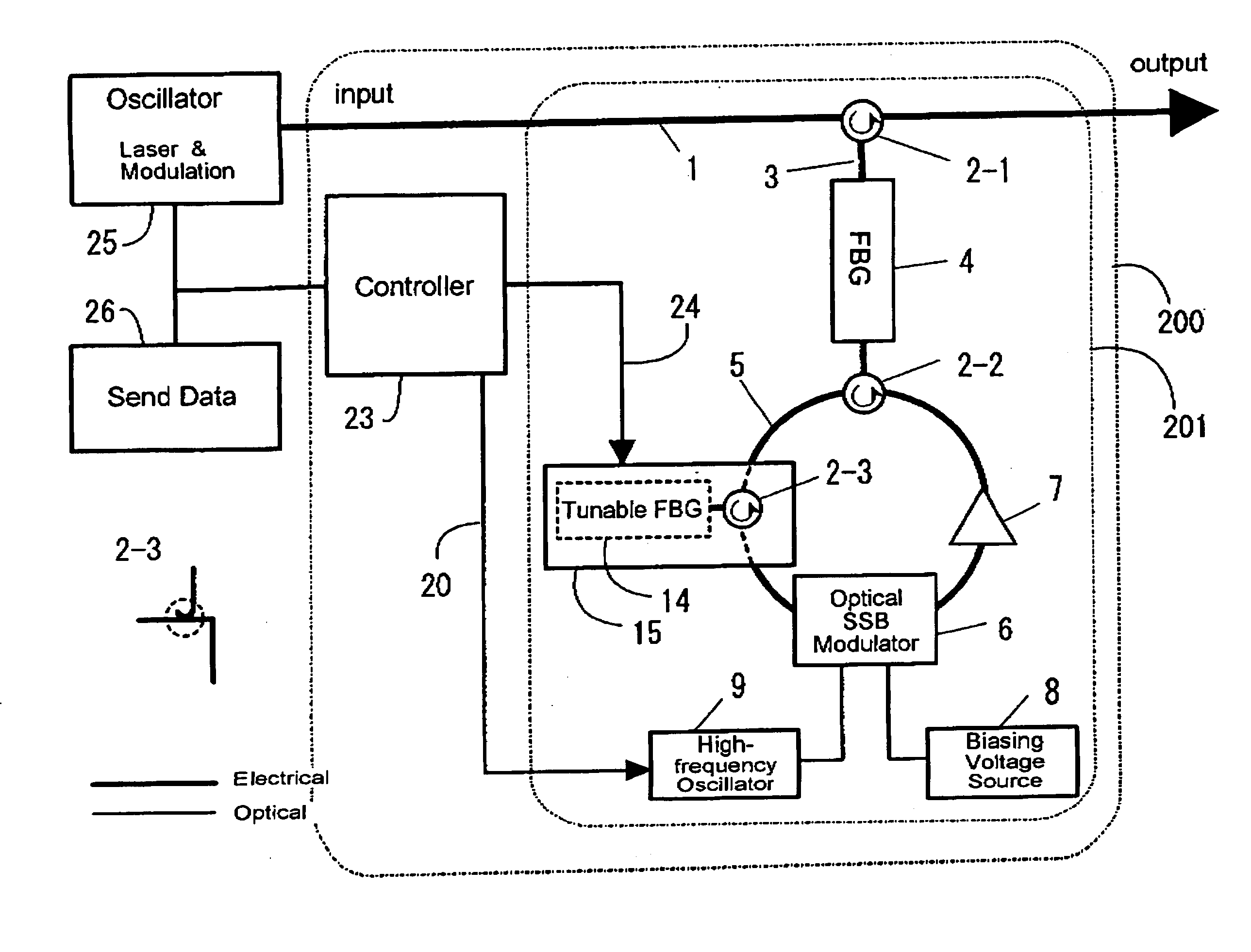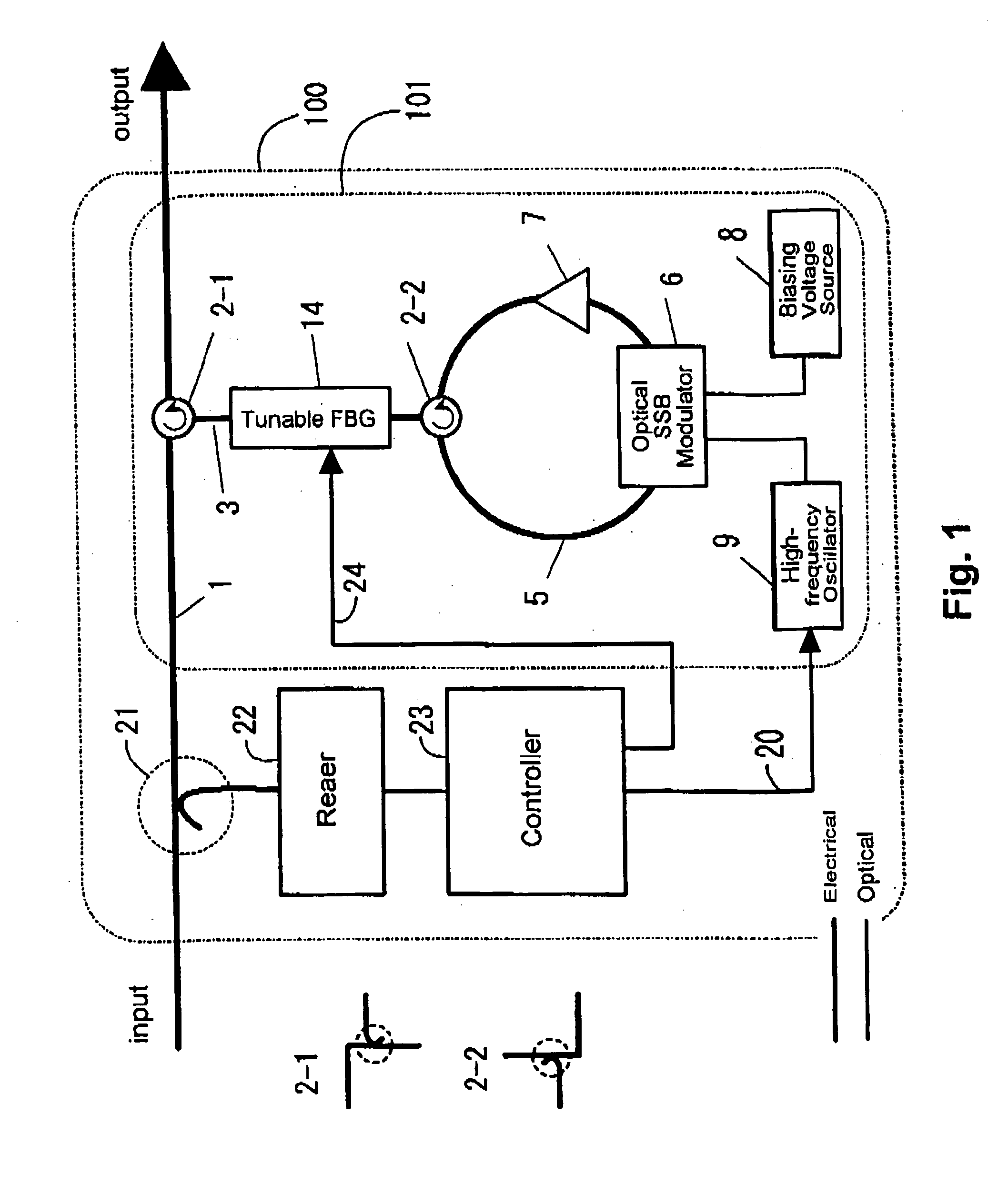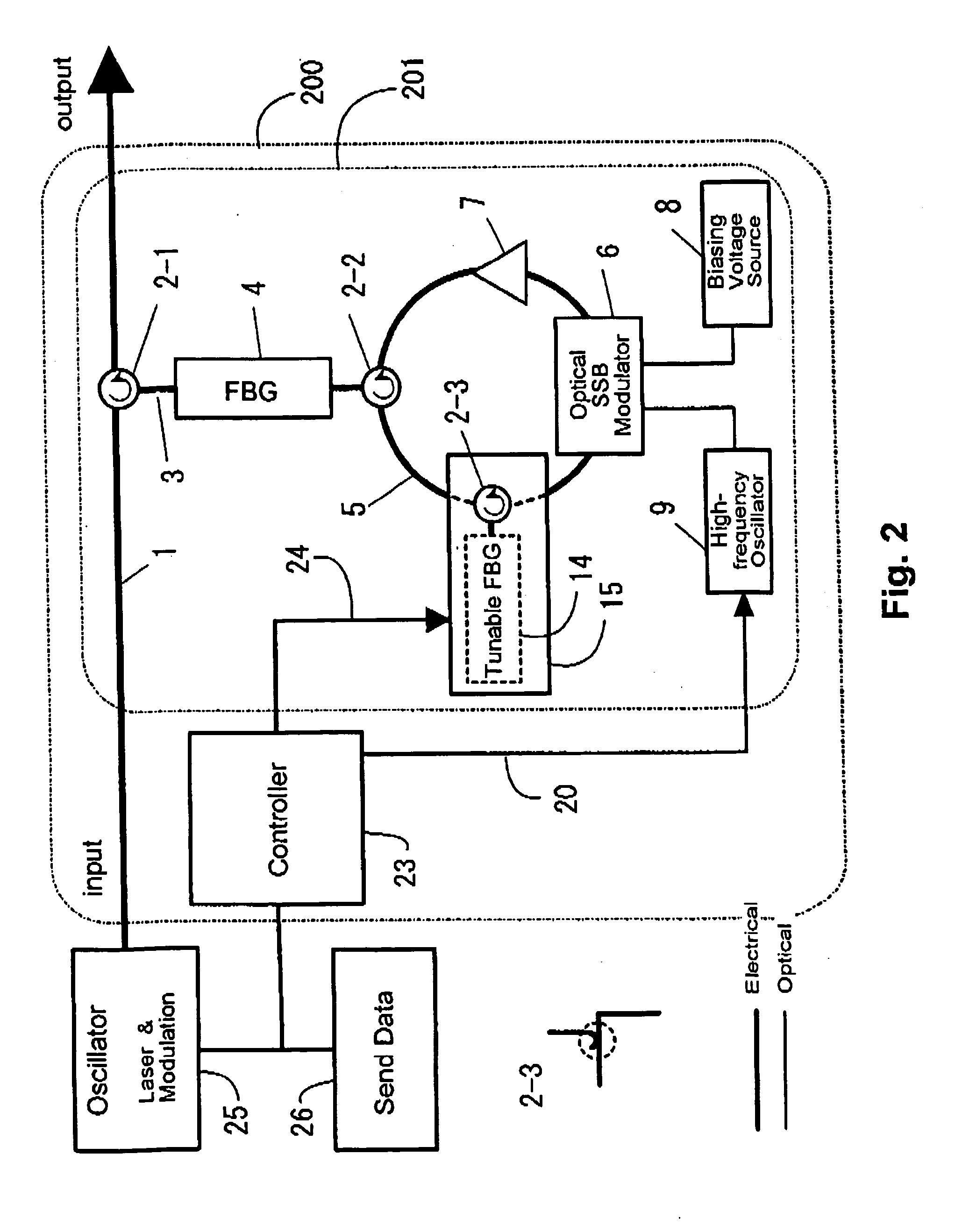Tunable dispersion compensation apparatus
a compensation apparatus and dispersion technology, applied in the direction of instruments, optical elements, optics, etc., can solve the problems of limited operation speed of electrical signals processing portions, high capacity, and inability to fully exploit the high-speed advantages of optical signals, so as to reduce the effects of transmission channel dispersion, increase the compensation amount, and widen the range of variability
- Summary
- Abstract
- Description
- Claims
- Application Information
AI Technical Summary
Benefits of technology
Problems solved by technology
Method used
Image
Examples
embodiment 1
[0038]FIG. 1 is a block diagram illustrating, as Embodiment 1 of the invention, a tunable dispersion compensation apparatus 100 that compensates after receiving signals. This is an apparatus that performs dispersion compensation on received optical signals based on information that accompanies the received optical signal, being provided with an input block and output block for the received optical signal. In addition a dispersion compensation block 101 is provided between the input and output blocks, and the compensation of wavelength dispersion is performed here. The operation of this dispersion compensation block 101 can be replaced with that of the dispersion compensation block 201 to be described later.
[0039] In the dispersion compensation block 101, a dispersion element that has wavelength dispersion characteristics, consisting of tunable FBG 14, and a wavelength shifter that is able to adjust the amount of shift depending on the input optical signal, consisting of an optical S...
embodiment 2
[0042] In addition, FIG. 2 is a block diagram illustrating, as Embodiment 2 of the present invention, a tunable dispersion compensation apparatus 200 that compensates for the wavelength dispersion of the transmission channel prior to the transmission of an optical signal. This is an apparatus that performs dispersion compensation in advance on optical signals to be sent based on address information in the optical signal to be sent, being provided with an input block and output block for the optical signal to undergo dispersion compensation in advance. In addition, a dispersion compensation block 201 is provided between the input and output blocks, and the compensation of wavelength dispersion is performed here. The operation of this dispersion compensation block 201 can be replaced with that of the dispersion compensation block 101 described above. In addition a transmission-type tunable dispersion element is used as the tunable dispersion element 15, but one using a circulator 2-3 ...
embodiment 3
[0047] Embodiment 3 will be described. With the tunable dispersion compensation apparatus shown in FIG. 1 or FIG. 2, the frequency of the output optical signal is shifted from that at the time of input. There are cases in which such frequency shifts are preferably as small as possible. In the constitution shown in FIG. 4, the dispersion compensation block is divided in two, giving a constitution wherein the frequency shifts cancel each other out. Here, a tunable FBG is provided in each of the dispersion compensation blocks, but it may be provided in only one. In addition, the frequencies of the modulation signals applied to each of the optical SSB modulators need not necessarily be the same.
[0048] With the tunable dispersion compensation apparatus of FIG. 1 or FIG. 2 above, one tunable FBG is used for dispersion compensation, but a pair of tunable FBGs may also be used instead. The optical circuit shown in FIG. 5(a) is an example wherein the dispersion compensation block consists of...
PUM
| Property | Measurement | Unit |
|---|---|---|
| wavelength dispersion | aaaaa | aaaaa |
| dispersion | aaaaa | aaaaa |
| wavelength shift | aaaaa | aaaaa |
Abstract
Description
Claims
Application Information
 Login to View More
Login to View More - R&D
- Intellectual Property
- Life Sciences
- Materials
- Tech Scout
- Unparalleled Data Quality
- Higher Quality Content
- 60% Fewer Hallucinations
Browse by: Latest US Patents, China's latest patents, Technical Efficacy Thesaurus, Application Domain, Technology Topic, Popular Technical Reports.
© 2025 PatSnap. All rights reserved.Legal|Privacy policy|Modern Slavery Act Transparency Statement|Sitemap|About US| Contact US: help@patsnap.com



